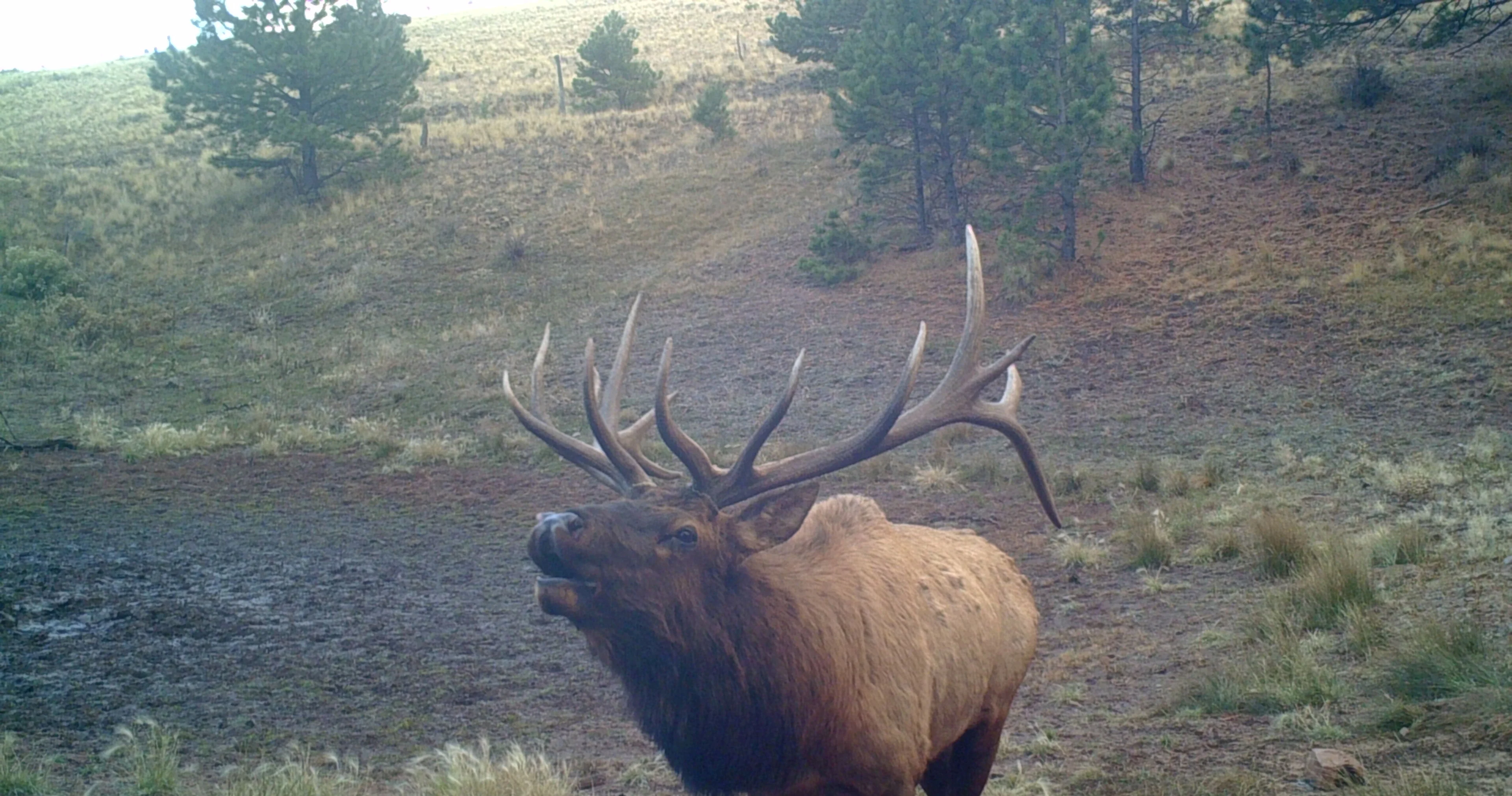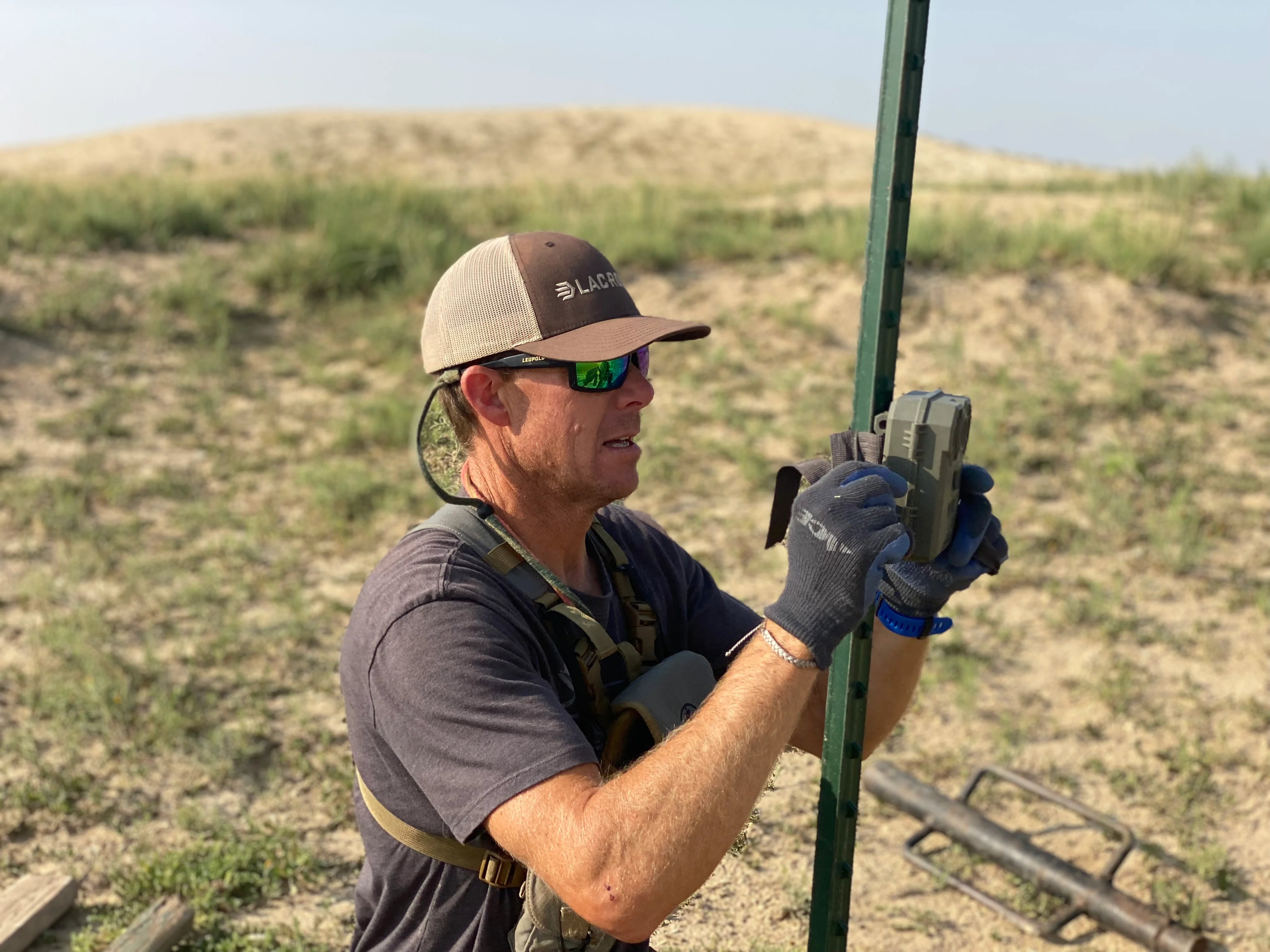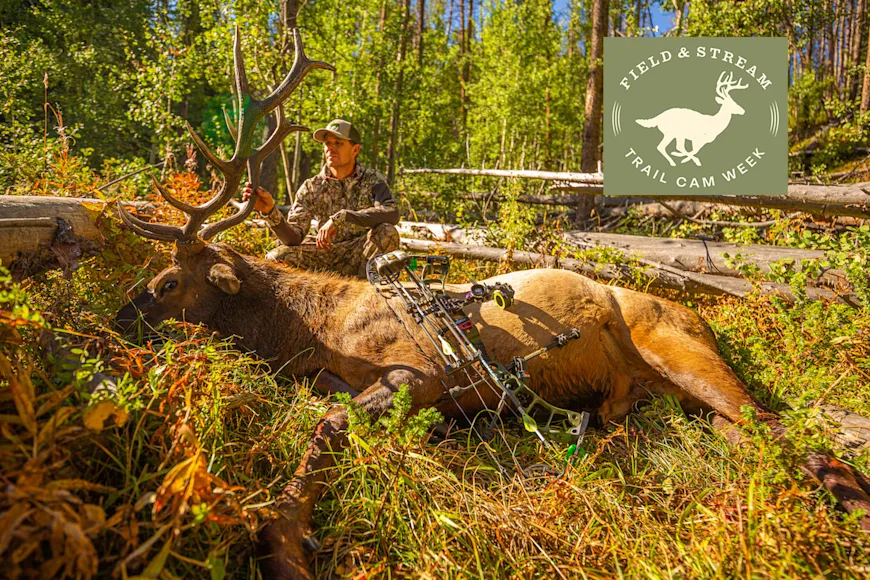While trail cameras are great tools for patterning whitetails and locating turkeys, many hunters don’t realize how effective these devices are for western big game scouting. And I don’t just mean setting cams over watering holes and wallows to capture images of elk, pronghorn, and muleys. There are plenty of other strategies for snapping pics of big bulls and getting a bead on local herds. You just need to know how and where to place your trail cameras in the backcountry.
For starters, western trail cam tactics differ from setting cams in the East and Midwest due to rugged terrain, limited service, and expansive landscapes. Most western hunters chase elk, muleys, speedgoats, bears, and lions on enormous tracks of public land that require long hikes to reach. This means extended periods of time in between checking cameras and relying on your gear to work properly without maintenance for weeks to months on end.
I’ve been setting trail cameras in the Colorado backcountry for years, and the following eight tips have helped me be more successful at patterning various big game species. Follow these tips, and you’ll fill more tags this fall.

1. Set Your Cameras North or South Facing Over Water
Water reigns supreme on the western prairies, rolling hills, and cedar-dotted canyonlands. Late in the summer, when scouting for pronghorn, I put multiple cameras on prairie ponds, stock tanks, and springs. My go-to method is to drive a T-post into the ground and attach my camera with the strap directly to the post or use Browning Trail Camera’s T-Post Mount. The T-Post mount is sturdy, and the rotating ball head lets you angle the camera perfectly.
I discovered that sometimes, depending on the trail camera model, the rising and setting sun can trigger false images. For this reason, I face my cameras north or south to avoid blank photos. Also, depending on the size of the water source, find the heaviest concentrations of tracks and put the camera there. You should run your cameras on video mode, too. Videos give you more intel about where bucks approach a water source from and allow you to better evaluate trophy potential.
2. Use Lithium Batteries and Oversized SD Cards
I love taking a summer scouting mission, getting off the beaten path, and hanging elk cameras over wallows and at well-used trail intersections. After setting my cams, I don’t return to check them for at least three to four months. For this reason, I load my cameras with high-capacity SD cards and power them with Lithium batteries.
One year, I forgot about one of my elk cams. The HuntStand app eventually reminded me it was still there, and when I returned the following summer to retrieve it, the cam still had 60 percent battery life. Only lithium batteries can last that long. Also, when hanging cams in far-flung locations, I typically set the capture mode to a three-photo burst or a five-second video at most. Nothing is worse than showing up to your hunt to find that your SD card filled up a week before.
3. Hang Your Cams High for Tree Sets
You have to get creative when hanging cameras on public land for two reasons: To help prevent theft and to protect the cameras from being destroyed by bears. I use tree mounts and trail camera holders to raise my cams off the ground. Angle your camera towards the ground to where you expect game to walk by. Then, crouch to the height of an animal and move around the area. Finally, pull the card and use an SD reader to view the images and ensure you’re centered in the frame.
4. Use a Bear Proof Container
In states like Idaho, where bear baiting is legal, a trail camera is worth its weight in gold. Not only can you pattern bears, but you’ll also know how many bears are hitting the bait and when. Plus, you’ll be able to evaluate the size of various boars. The bad news is that bears like to raise hell on trail cams. I lost six before I woke up to bear behavior. Bears chew cameras to pieces, knock them off trees, stomp them, and twist and turn them in the opposite direction you want the camera to face. All my bear cameras go in bear-proof trail cam containers. Trust me, they are worth the investment.

5. Don’t Overlook Ground Sets
Too often, I’ve returned to find trail cameras out of batteries, SD cards full, and, often, spun around a tree. Elk and deer are curious critters. They will lick trail cameras to death, putting a nasty film over the lens, kick them, and spin them with their antlers. For this reason, I often use a ground set.
Check state regulations before chopping down any live brush, but if legal in your area or if you’re hunting on private ground, carry a hefty knife. I like Benchmade’s Bushcrafter. My go-to ground set is to find a large boulder or log. For boulders, place the camera on top and use another sizeable rock behind it to keep the cam upright. Wrap the strap around the rock and then create a wood base around the camera with sticks. Angle it, and use leaves, moss, etc., to make it disappear.
However, my favorite ground-setting technique is placing cameras under a log. I carry a small garden spade in my backpack, dig the ground underneath the log, and hide the camera. Take your time when digging your hole under the log. I pile loose dirt behind the camera and then tilt the camera back into the loose dirt to give it the right angle. This helps hide the cam from animals and thefts.
6. Mark Every Cam
It’s easy to forget where you set a camera when hunting on a couple hundred thousand acres of public land. It gets even more tricky when if you set out multiple cameras. To prevent losing them, I mark all of my trail camera locations on my HuntStand app. If you know you will be in an area without cellular service, download your offline maps beforehand, and you’ll be ready. HuntStand and other mapping apps offer a trail camera icon that allows you to pin each camera and store photos from that specific cam. It’s a cool feature that will save you money and headaches.
7. Use Traditional Non-Cellular Trail Cameras
Cellular cameras are trendy, and it makes sense, especially for waterfowl hunters. These high-tech devices send real-time images and video to your smartphone. However, not only are cell cameras illegal in some states, but they also don’t work in most backcountry areas. For these reasons, western big game hunters should stick to traditional non-cellular trail cams. If you’re confident the cell service in your area is good, by all means, set a cell-cam. But you should always put a non-cellular cam nearby as a backup. This way, if the area loses service, you can still retrieve photos.
8. Build a Trail Cam Kit
One of the best things I ever did was build a trail cam kit. Cameras, batteries, SD cards, straps, and accessories are difficult to track. I’ve lost cameras, misplaced straps, and arrived at a deployment location only to realize two of my cameras didn’t have batteries. So I created a one-stop place for all my trail camera gear and accessories.
I use Yeti’s GoBox 30 and GoBox 60 waterproof cases. When I arrive at my trail cam destination, I transfer the cameras I want to take, extra batteries, straps, SD cards, and any camera accessories into my backpack. The boxes feature a removable divider that separates the bottom into a pair of compartments perfect for stacking cameras and organizing straps and other gear. The removable trays are great for batteries and SD cards.
I also recommend purchasing an SD card holder and having cases for empty cards and cards that need to be reviewed. Three years ago, after pulling trail camera cards from a prime elk unit in Colorado, I got in a hurry and put three cards in my pocket. When I got back to camp, I had no cards to review. Take time and stay organized with your trail cameras in the backcountry. After all, retrieving cams in the mountains is a lot different than walking out back to the food plot. Plan ahead and be organized when running trail cameras in the West.


